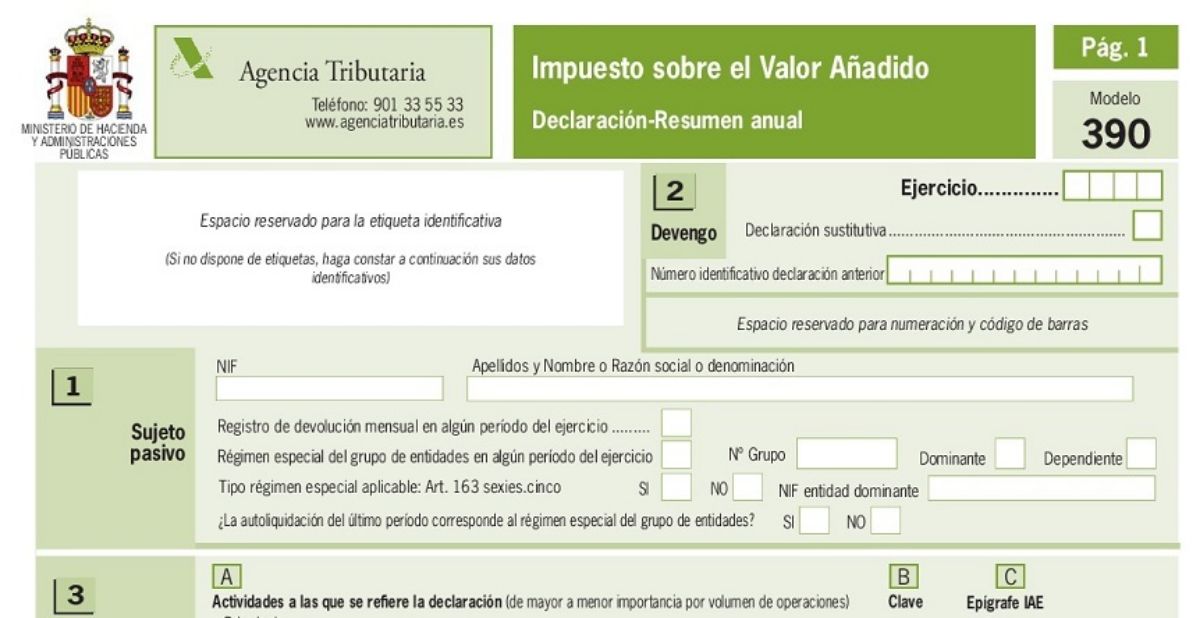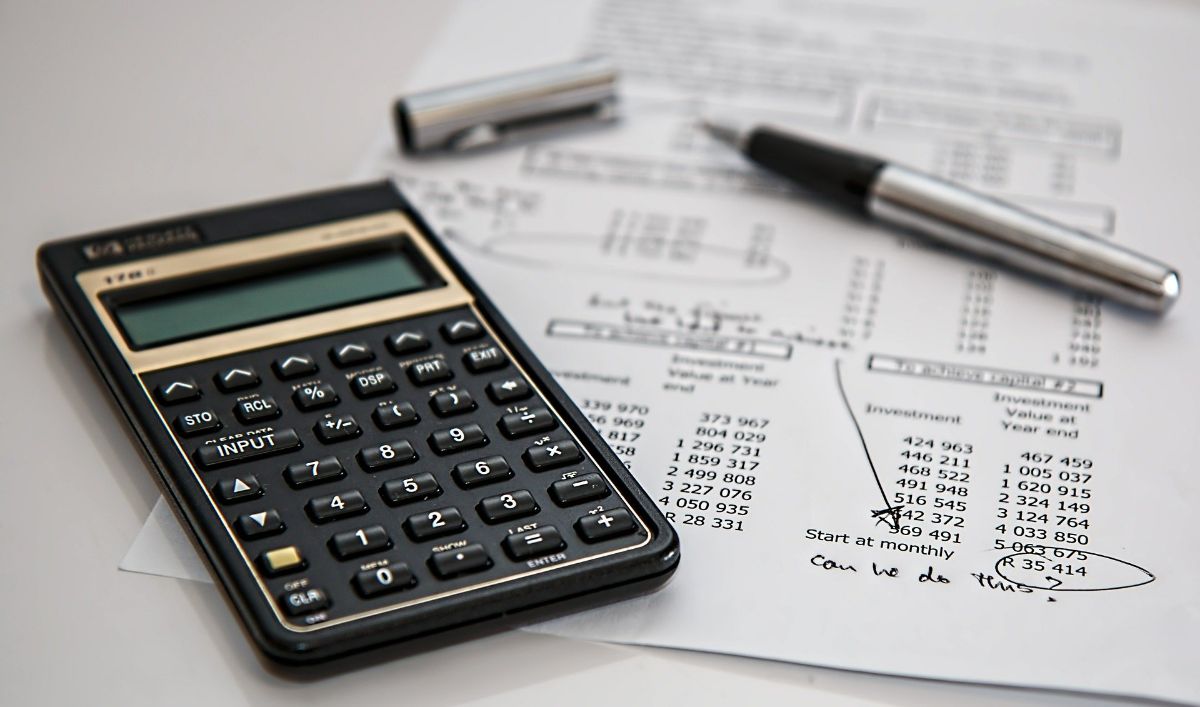
Source photo Model 390 what it is for: Asesorlex
There are many procedures that you have to comply with depending on the characteristics of your business, being self-employed, etc. One of those procedures has to do with the model 390, but what is it for? What does this model imply? Is it mandatory to present it?
If you find that you have been told that you have to prepare to present it, but you do not know what it is or what it is for or how to fill it out, then we give you the keys so that you can know it thoroughly.
What is Model 390
We can define model 390 as an informative and annual document. In other words, it becomes a document in which, on an annual basis, you will present a VAT summary. Actually, it is as if you took all the 303 models and condensed them in this document, in such a way that they have to match all of them (if not, they will not let you present it).
That is In it you have to collect the quarterly VAT returns that are made and make a kind of summary so that the Treasury sees that everything is correct.
You are not really going to give more information to the Treasury than what you have already given, because you are not going to put anything beyond the information that you have used in the 303 VAT forms, but for the Treasury it is important because it is a kind of summary in which you can also assess if you have made a mistake and rectify before they go to look at your information.
So what is the Model 390 for?

Source: nersasi
We are talking about an informative document. You do not have to pay anything, but you do have to present it, because it contains summaries of the operations related to VAT.
And why does the Treasury force you to do it if you already have the 303 models to collate the data? Because what you want is to see that everything fits, that both the declaration of the models and the model 390 obtain the same data Because, if this doesn't happen, then you do risk being sent a tax inspection.
Who is obliged and who is not to present it
Despite the fact that form 390 is somewhat "informative", the truth is that there are certain groups that are obliged to present it. And at the same time there are others who do not have to worry about this process. To make it clearer:
- All natural and / or legal persons are obliged to fill it out and present it that, at some point, they have presented a model 303, that is, the quarterly VAT. It does not matter if you have only submitted one or all of them, at the moment you already do one, you have to fill in this form.
- The self-employed who pay in modules are not required to present this model, and neither do those who are engaged in the leasing of urban real estate. Nor do large companies or those that are registered in the monthly VAT register have to present it because they keep everything through accounting records. Those who are required to present form 368 will not have to present this either.
When to file form 390

Now that you know what the 390 model is and what it is for, the next step is to know when to present it. This always It must be presented with the 303 models of the last quarter of the year, that is, with the fourth.
If you have never done the procedure before, you should know that the first period is presented in April; the second in July; the third in October; and, finally, the fourth, and the one that interests us, in January.
In fact, if the date in the previous quarters is until 20 of those months (April, July, October), in the case of the last quarter there is a term until January 30 (if this falls on a non-business day it will be the first day next skill).
How to fill it

Filling the 390 is not difficult, although it can be impressive at first with the number of pages it has. To do this, you have to enter the Treasury website and, through the Cl @ ve PIN system, signature system or electronic certificate, you can fill it out online.
All the parts that must be taken into account more are:
- The identification data: where the NIF, name of the self-employed will be specified ...
- Accrual: where you must indicate the year to which it refers or if it is a substitute return.
- Statistical data: here you will find the list of activities of the self-employed person.
- Accrued VAT: in this section you have to put what the income per activity is. Of course, it must be broken down by type of activity and also by the VAT that is applied to it.
- Deductible VAT: The VAT that is borne from the expenses.
- Result of the annual settlement: It would be the total of the quarterly declarations.
- Result of settlements: where everything must fit.
- Volume of operations: in terms of income from operations carried out.
There are other important sections such as specific operations, pro rata or activities with differentiated deduction regimes. But this does not apply in all cases.
Once you have stuffing you have to verify that there is no error (It can vary in some figures, especially in terms of cents). If that happens, it will be necessary to square it well because, if not, it will not allow you to present the model.
What happens if I do not present it
Many freelancers and people can forget about this procedure because it is not really a tax and you do not have to pay it, but only inform. If that happens, The Treasury can impose a sanction that is normally light if it has not been done maliciously.
But this can rise if the failure is made repeatedly. So the best thing in these cases is to remember to do the procedure since it costs nothing.
As you can see, the 390 model and what it is for is easy to understand. But you should not forget to fill it out annually to avoid that the Treasury can take action on the matter and you must pay a fine or similar for having forgotten it. Have you had experience with this model? Do you think it is duplicating the procedures for all the people who are obliged to do so?